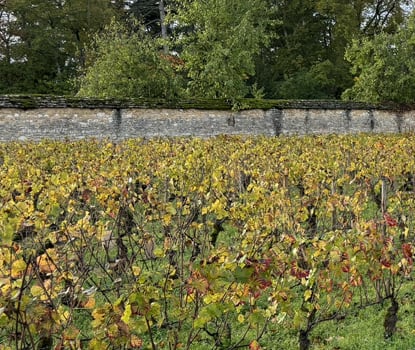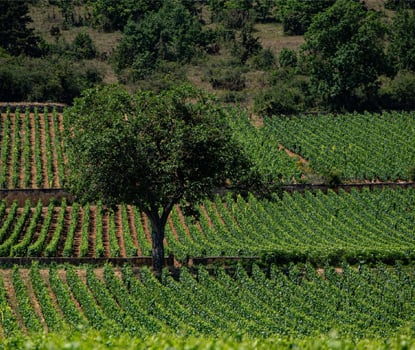Burgundy 2022 En Primeur
We are thrilled to be able to offer Burgundy 2022 en primeur online
Click to buy HERE
2022 VINTAGE
Burgundy 2022: walking on sunshine?

Welcome to the C&B Burgundy hub, the home of our new vintage releases.
We are thrilled to launch 2022 Burgundy season. After last year’s tiny crop, we are so excited to get to work with the healthy yields of both 2022 and 2023.
2022 is a vintage of warmth and luminosity, in which the fruit is expressive and, crucially, tempered by freshness and mineral definition. A year of poise, in which both reds and whites were able to excel. We hope you can make up your own minds at one of our Burgundy tastings.
Please use the links below or contact us in the usual way. The offer opens in 2024.
Contact us to place your order: [email protected] | 020 7265 2430
2022 Burgundy
Guy Seddon, Head of Fine Wine Buying, shares his insights into the 2022 Burgundy vintage.
BURGUNDY REGIONS

CHABLIS
Chablis is unmistakable for its distinctive profile -dry, flinty, mineral, steely – that sets it apart from the classic white Burgundies of the Côte d’Or.
This stylistic difference is perhaps unsurprising, given that the Chablis appellation is geographically separate, 130km northwest of Beaune, a picturesque 1.5 hour drive through the mountainous massif de Morvan. In fact, in some senses, Chablis might beconsidered closer to Champagne, in its location, climate and style.
The appellation comprises a four-level hierarchy: Chablis Grand Cru, Chablis 1er Cru, Chablis and Petit Chablis, classified over time, and spanning different terroirs and price tags.

CÔTE DE NUITS
The northern half of the Côte d’Or escarpment, the Côte de Nuits gets its name from one of its most famous villages: Nuits-Saint-Georges.
Stretching 20 kilometres from Dijon to Nuits-Saint-Georges and expanding between 200-800 metres wide, this illustrious region covers 3600 hectares. Within this, it boasts an impressive number of grand crus vineyards where the Pinot Noir grape rules supreme. Travelling through the region, you will see the slopes adorned with vines, periodically broken up by barren, rocky outcrops or limestone quarries in the south. The soils lower down the slopes are more fertile, whilst narrow strips higher up the hillsides provide exceptional terroir, albeit with less vine vigour.
Although reputed for its red wines, the Côte de Nuits also produces a small amount of high-quality whites too. Simply put, it is home to some of the greatest Pinot Noirs in the world.

CÔTE DE BEAUNE
In the southern half of the Côte d’Or, the appellation of Côte de Beaune is rugged and picturesque. Owing its name to the city of Beaune at the heart of the area, it is almost twice the size of the Côte de Nuits, with around 6000 hectares under vine.
Renowned for producing some of the region’s greatest white wines, including Meursault, Puligny-Montrachet and Chassagne-Montrachet, among others, almost all of Burgundy’s white grand crus can be found here. Each expresses intensity and complexity, offering some of the most exceptional Chardonnays in the world.
The Côte de Beaune is also a source of very fine Pinot Noir, these red wines tending towards delicacy and finesse.

CÔTE CHALONNAISE
Nestled between the Côte d’Or and Mâconnais, the Côte Chalonnaise produces both red and white wines from Pinot Noir and Chardonnay.
Its undulating landscape offers a mixture of limestone, gravel and clay soils, similar to that of Côte de Beaune, although it enjoys fractionally more sunshine.
There are five village appellations: Mercurey and Givry produce mostly red wine with small quantities of white, Montagny is solely white, Rully offers both red and white along with some sparkling wine production, and Bouzeron uniquely has its own appellation for white exclusively made from Aligoté.

MÂCONNAIS
An important district of Burgundy on the River Saône producing dynamic wines. The production is swayed towards white wine, with 80% of the region being planted with Chardonnay, whilst the reds are largely dominated by Gamay.
The quality hierarchy begins with Mâcon, goes up to Mâcon-Villages and the top status is reserved for wines that hail from 26 specified communes, which can hyphenate their village name after Mâcon. The latter two levels are reserved for white wine only.
Lying between Beaujolais to the south and Côte Chalonnaise to the north, the Mâconnais benefits from more sun, less rain and less frost risk. The terrain alternates between hilly panoramas and tremendous cliffs interspersed with farmland.

BEAUJOLAIS
In the southernmost part of Burgundy, Beaujolais champions the Gamay grape. Although traditionally renowned for light and fruity reds made popular by the emblematic Beaujolais Nouveau, the arrival of established Burgundian producers to this area has meant a move toward quality-focussed wines with a more concentrated style.
This section focuses on the wines of the Labruyère family, whose eponymous Domaine Labruyère in Moulin-à-Vent was established in 1850 and has become a stand out producer in the region. The family also owns Domaine Jacques Prieur in Meursault.
Winemaker Nadine Gublin’s vision of Beaujolais is one of terroir and the textured expression of her vineyards’ granite soils. The prices are a refreshing point of contrast to the wines of the Côte d’Or!
Vintage Report
Finally, some volume. Having tasted in painfully empty cellars over the past few years, particularly in the Côte de Beaune, 2022 has arrived like a breath of fresh air.

After the historically tiny 2021 crop, smiles are back on the faces of growers, whose cellars are now full of the generous 2022 and 2023 vintages.
Your first two questions are, naturally, Are the wines any good? and What about the prices?
The answer to the first is easy: yes! 2022 is a winner, for both reds and whites. A warm year which has produced surprisingly fresh wines, of both poise and substance, whose terroirs are clearly visible.
As for the second question and thoughts on the growing season, read on in our Burgundy 2022 vintage report...
Guy Seddon
Head of Fine Wine Buying
